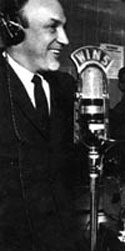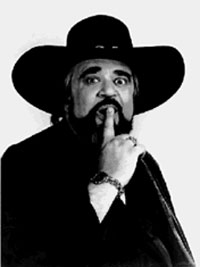🎶 Motown: The Soulful Sound That Rock Couldn’t Ignore
If rock and roll was the wild child of blues and country, then Motown was the smooth older cousin who showed up with a sharp suit, impeccable harmonies, and a groove that couldn’t be ignored. While Motown is best remembered for bringing Black soul music into the pop mainstream, it also left fingerprints all over the development of modern rock.
Let’s take a spin through Hitsville U.S.A. and see how this Detroit powerhouse changed the sound of music forever—and gave rock a whole new rhythm to move to.
🏢 It All Started in Detroit
Motown Records was founded in 1959 by Berry Gordy Jr. with a loan from his family and a lot of determination. He called his Detroit headquarters “Hitsville U.S.A.”—a modest little house on West Grand Boulevard that became the center of a musical revolution.
What Gordy created wasn’t just a record label. It was a hit-making machine, blending gospel-style vocals, jazz instrumentation, and a heavy backbeat into a style that felt fresh, polished, and universal. By the mid-60s, Motown artists were all over the radio, from The Supremes and The Temptations to Marvin Gaye, Smokey Robinson, and Stevie Wonder.
🎸 The Motown Sound Meets Rock
Motown didn’t start out trying to influence rock music—it was aiming to cross over into pop. But the “Motown Sound”, with its driving basslines, tambourines on the backbeat, and catchy melodies, was just too good not to imitate.
Rock bands took notice.
- The Beatles openly loved Motown. They covered “You Really Got a Hold on Me” by Smokey Robinson and borrowed harmony structures and vocal stylings from Marvin Gaye and The Miracles.
- The Rolling Stones recorded “Ain’t Too Proud to Beg” and “Just My Imagination”, borrowing soul grooves for their blues-rock style.
- Even punk and new wave bands of the ‘70s and ‘80s—like The Clash and Elvis Costello—incorporated Motown’s tight rhythms and socially conscious lyrics into their sound.
🎧 Want proof? Just listen to the bassline of “My Girl” by The Temptations and then cue up Paul McCartney’s work on “Something” by The Beatles. That’s Motown’s influence, loud and clear.
🔊 Motown’s Studio Secrets
Motown had a house band called The Funk Brothers, a group of uncredited but incredibly talented musicians who played on nearly every Motown hit. Their tight, rhythmic playing defined the Motown groove—and that groove found its way into modern rock recordings.
Motown also introduced a more layered approach to production. Berry Gordy’s famous “quality control” meetings had producers and writers refining songs until they were bulletproof. This attention to arrangement and studio craft influenced rock producers like Phil Spector, George Martin, and later, Brian Eno.
🗣️ Breaking Barriers, Setting Standards
Beyond the music, Motown’s success helped break down racial barriers in the music industry. Before Motown, Black artists struggled to get airtime on white radio stations. But Gordy’s vision—and the universal appeal of his artists—changed that.
The label’s success paved the way for future Black rock musicians, from Prince and Lenny Kravitz to Gary Clark Jr. and H.E.R., and helped integrate American popular music at a critical time in the civil rights movement.
🎥 Watch: “Standing in the Shadows of Motown” Documentary Trailer
🎤 Motown’s Legacy in Today’s Rock
Motown’s influence on rock didn’t end with the ‘60s.
You can hear echoes of Motown in modern bands like:
- Bruno Mars (channeling The Jackson 5)
- The Black Keys (stripped-down soul grooves)
- Amy Winehouse and Adele (neo-soul with a rock edge)
- Kings of Leon and Alabama Shakes, who blend garage rock with soul-infused vocals and arrangements
Even the resurgence of vinyl records and analog sound owes something to Motown’s warm, rich production style.
🎵 Final Chord
Motown wasn’t trying to make rock music—it was trying to make great music. But greatness tends to ripple outward, and soon the sound of Detroit soul became a key ingredient in the DNA of rock and roll.
Whether you’re headbanging to Led Zeppelin or grooving to The White Stripes, there’s a bit of Motown in the mix. It’s not just a label—it’s a heartbeat that still drives the rhythm of modern rock.







